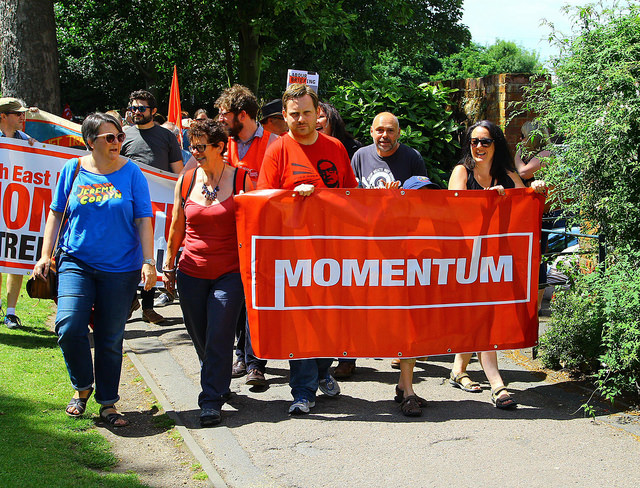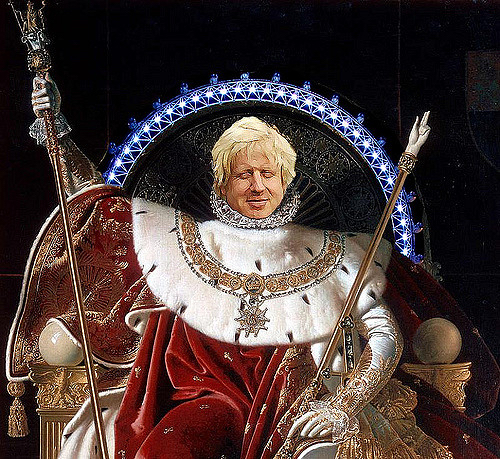Now in these dark times, the Conservatives could well expand their majority by swallowing up the UKIP vote. The Tory majority, the smallest since 1974, counts on just 24.6% of the eligible electorate, which translates to 36% of the vote under our antiquated electoral system. Note UKIP counted for 12% of the vote in 2015 – that’s 4 million votes. So Theresa May is going for a full-blooded Brexit because she thinks she can steal back these right-wing voters.
If the Corbynistas are to succeed, the Labour leadership needs to refocus its policy initiatives around a few key areas, adopt a permanent campaigning style to remobilise the base, a voter registration drive and, perhaps most importantly, reshape the media debate. This is vital if Labour is to answer the questions facing the country. In short, Labour’s only hope is to increase voter turnout (which is easier said than done) to thwart Tory incursions and expand into enemy territory.
Stoke and Copeland
This is why the by-elections are not simply reflective of future prospects. For starters, the victory in Stoke was partly based on a low turnout and yet Labour came out on top: the Tory-UKIP vote fell by 4,000 votes, but remained split in the end. So the first-past-the-post system favoured Gareth Snell’s Blue Labour campaign to rescue English nationalism from the racists. In other words, this win was not an unambiguous one. Though it is possible to rebuild the party’s Stoke base over time, it just depends on what happens over the next three years.
That being said, it was great to see Paul Nuttall knocked back on his ass. It wasn’t just because Nuttall lied about Hillsborough though, more importantly UKIP has lost its raison d’etre since Leave won the referendum. Still, Paul Nuttall was thick enough to believe the bogus media narrative that the Northern working class vote was more UKIP than Labour. The UKIP base has always been a strange right-wing coalition: one part Tory lite, one part fascist, one part libertarian fruitcake. This is a multi-class bloc, but the working class element are unlikely to come from the Labour base.
At the same time, the real triumph of Nigel Farage may be that the Conservatives are taking up UKIP’s nationalist agenda. The May government has made it clear it is going for a hard Brexit and that it is open to restricting immigration, even to the detriment of economic growth. The electioneers around May probably have calculated that the party can survive the social fallout. Putting it simply, Farage has already won without ever coming close to a seat in Parliament.
By opting for a hard Brexit, Theresa May has successfully neutered the UKIP threat to her party. UKIP was only gaining in Labour seats because it was subsuming the right-wing opposition vote under one umbrella. If the Tories had been more focused on Stoke they might have eaten through Nuttall’s base and squeezed Labour’s majority even further. But the Conservative leadership decided to focus on the easy target. This brings us to Copeland.
There’s no doubt about it, the loss of Copeland was a serious blow. It revealed three factors: 1) the Conservatives won by swallowing up UKIP, while the Labour vote was squeezed on two fronts by 2) the Tories over Sellafield and 3) over Brexit by the Lib Dems. The lack of a clear message on nuclear power cost Labour the jobs vote, whereas Corbyn’s three line whip on Article 50 cost the party support among Remain voters. The latter factory may be more important in the end, compared to the more localised nuclear issue.
None of this takes place in a vacuum, the Labour Party is in historic decline because the Blair years cost the party 5 million voters. The New Labour strategy of taking the working class vote for granted, as it chased after middle class families, has cost the party dearly. This is why the 2010 and 2015 elections were lost. It’s partly why Scotland was lost. Despite the flaws of the Corbyn leadership, the Blairites and Brownites lack an alternative. A return to New Labour is not possible in a world where the combined Tory-UKIP vote stands at 48%. But a nationalist turn won’t cut it either.
Corbyn’s Promise
The promise of Corbynism to reverse this trend has not yet been realised. I put this down to a lack of political strategy and coherence on policy and message, as well as the overwhelmingly hostility of the media and the efforts of Blairites to undermine Corbyn. The illusion is that Corbyn is the fundamental problem for Labour, when it was clear that the Brown government lost power and Ed Miliband lost Scotland. Putting a David Miliband or a Dan Jarvis in Corbyn’s place will not change the reasons why Labour is in a losing streak.
It’s not about your jawline or what suit you wear. The bid to transform Labour is still real for as long as there is no alternative to the radical left in the party. But it takes work to repair 40 years of damage. Some pessimists would argue it is hopeless. If Labour is unsalvageable, then Corbyn may go down with the ship – taking the blame for decades of rot. Even still, I think it would only ensure the collapse of the party to turn back now. It’s not about Corbyn, it’s about what kind of country we want to live in. The old phrase “socialism or barbarism” is more than rhetorical now.
Bizarrely, Conservative Lord Finkelstein has offered some recommendations in his Times column. Far from arguing for retreat in the hope of saving face (as Owen Jones has done), Danny Finkelstein suggests the only hope for Corbyn is to instigate a new antagonism within the Labour Party to change it forever:
[Corbyn’s] only hope must be as a subversive challenger, relentlessly organising to take over the party and talking about his efforts to do so. He should come out with huge, earth-shaking radical left-wing policies and not care that Yvette Cooper and I both think that they are bonkers. He should skip prime minister’s questions in order to attend protest rallies. He should organise to deselect critics and win selection contests for his people.
Much as the franchise has been expanded for the leadership elections, so it must be expanded at the level of the CLPs. power should be transferred downwards from the General and Executive Committees to the grassroots. Participation should be made easier and the decisions should be made by a committee of the whole membership, not merely a clique of the same. Every member of the CLP must have the right to become its MP, and the membership should be ballotted before every election – or by-election – in order to choose the party’s candidate. This should end the practice of ‘parachuting’ supposedly orthodox candidates into allegedly safe seats. No more Hunts in Stoke. labour Party MPs will be accountable, first and foremost, to their constituencies and not to the leadership, the PLP or the NEC. Re-selection at every election will ensure that this remains the case.
Up until now Jeremy Corbyn has stuck to a centrist style of leadership. However, the Labour coalition of liberals, social democrats and socialists, may just be too broad for the new situation. The broad church approach has been a recipe for incoherence on policy and a lack of strategy on the media. If Corbynism is to succeed, the party has to be transformed in the long-term and that requires thinking beyond 2020. A surrender or a retreat would just offset this process of democratic reform.
If the experiment ends with Corbyn stepping down in 2020, the opening for transforming Labour into a mass democratic party would be lost. This would close the space for a radical leadership. Not only would it mean that the left would not be able to contest the elections in 2025 and 2030, it would mean Labour would fall back into the hands of the extreme centre. Contrary to Blairite illusions, the party would resume its lacklustre performance under Ed Miliband, or, worse, try to stake out a position as the party for English nationalism under the guise of Blue Labour. Either way, Labour is dead meat.
Photograph courtesy of duncan c. Published under a Creative Commons license.





